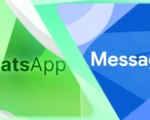Live Translation on WhatsApp Expected to Start with English and Hindi, More Languages to Follow
WhatsApp is reportedly in the process of testing a new feature that would allow users to translate messages into different languages directly within the app. This development, as tracked by feature specialists, suggests that the live translation functionality may be powered by Google’s translation technology. The feature is currently being tested in a beta version of the WhatsApp for Android app, signaling a significant potential enhancement to the platform’s messaging capabilities.
The live translation feature is designed to operate through on-device processing, which means that translation data will be processed locally on users’ devices rather than being transmitted to cloud servers. This approach is intended to enhance user privacy and security by keeping translation data within the device. According to WABetaInfo, a well-known feature tracker, this feature was observed in the WhatsApp for Android app version 2.24.15.8, which is still in the testing phase.
Initially, the live translation capability is expected to support translations between English and Hindi. This limited language support is likely a starting point, with the intention of expanding to more languages in future updates. The choice to begin with English and Hindi may reflect WhatsApp’s focus on major linguistic markets where these languages are predominantly used. As the feature progresses, users can anticipate additional language options to cater to a broader, global audience.

This new translation feature follows the recent appearance of another promising functionality in WhatsApp’s beta version—live transcription for voice messages. The addition of live translation aligns with WhatsApp’s ongoing efforts to enhance communication and user experience across different languages and regions. By integrating real-time translation and transcription capabilities, WhatsApp aims to make cross-lingual communication more seamless and accessible for its diverse user base.
The introduction of these features highlights WhatsApp’s commitment to improving its messaging platform with advanced technologies. With the support of Google’s translation technology, users will likely benefit from more accurate and efficient translations, further streamlining conversations in multilingual contexts. The feature’s on-device processing is also expected to mitigate privacy concerns associated with cloud-based translation services.
In summary, WhatsApp’s testing of a live translation feature marks a notable advancement in its app functionality, potentially revolutionizing the way users interact across language barriers. As the feature evolves and expands, it promises to offer enhanced communication tools that cater to a global audience, reflecting WhatsApp’s ongoing dedication to innovation and user-centric improvements.


















